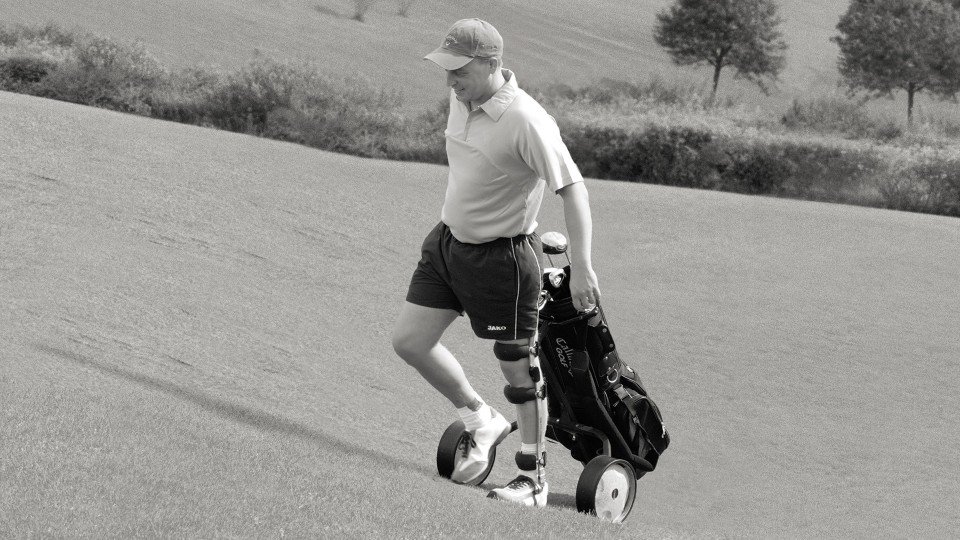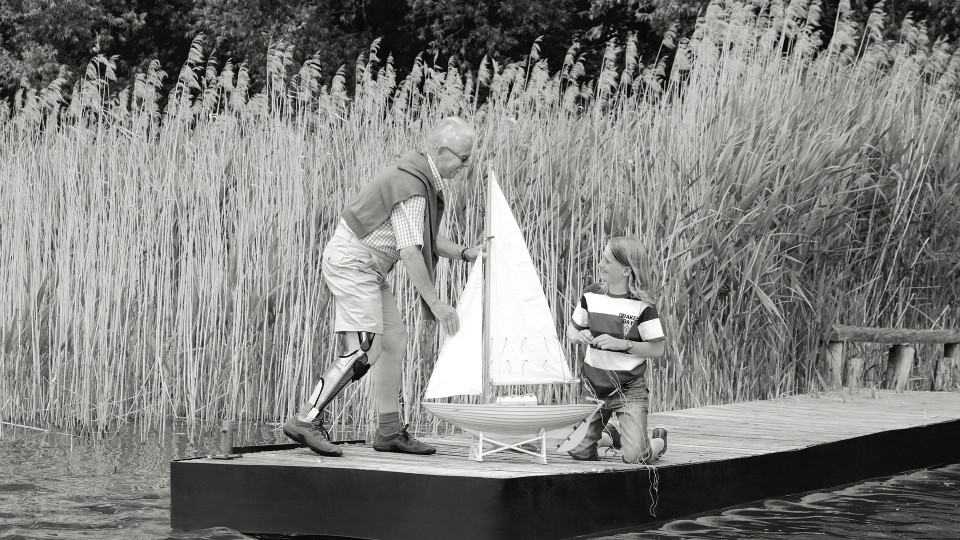Gait and energy efficiency of stance control knee–ankle–foot orthoses
Stance control orthoses are a new generation of orthotic intervention that could potentially be significant in assisting to improve the gait kinematics by knee-ankle-foot orthosis users.
The use of knee-ankle-foot orthoses with drop locked knee joints produces some limitations for walking in subjects with quadriceps muscle weakness. The development of stance control orthoses can potentially improve their functionality.

Axel: able to enjoy his hobbies. FreeWalk Stance Control Orthoses create a more natural gait cycle by locking during stance phase and unlocking before swing phase. Otto Bock.
Knee-ankle-foot orthoses (KAFOs) are lower extremity devices which extend over the knee, ankle, and foot. KAFOs are prescribed for people with lower limb muscle weakness; particularly in quadriceps muscles. KAFOs are prescribed for varying muscular weakness of the lower limb including poliomyelitis, post-polio syndrome, cerebrovascular accident (CVA), cerebral palsy (CP), spinal cord injury (SCI), and multiple sclerosis (MS) to provide stability of the lower limb during locomotion. Lower limb weakness, especially knee extensor weakness, is a condition that alters normal gait patterns, and this condition may result in decreased stability during daily tasks.
Conventional KAFOs provide stability during walking by locking the knee joint in a fully extended position during both stance and swing phases. This requires excessive energy consumption and induces abnormal gait events such as circumduction, hip hiking, and vaulting during gait. Walking with conventional KAFOs can also lead to premature exhaustion during ambulation, as well as limited mobility, pain, and a decreased range of motion (ROM) in lower limb joints. It has been reported that using a conventional KAFO reduces gait efficiency by 24%, increases vertical displacement of the center of mass (COM) by up to 65%, and also increases energy expenditure. Due to these factors, the rejection rate of using KAFOs in patients with muscular weakness of the lower limb due to conditions such as poliomyelitis, post-polio syndrome, CVA, CP, SCI, and MS has been reported as being between 60% and 100%.

E‐MAG Active Stance Control KAFO is calibrated to individual step length. Otto Bock.
Stance control KAFOs (SCKAFOs) are a new generation of KAFO which have been developed to prevent knee flexion during stance phase and permit free knee motion during swing phase of gait. Mechanical SCKAFOs are usually activated by ankle ROM mechanisms or limb inclination. The UTX, stance control orthosis (SCO) knee joint, swing phase lock (SPL), Horton, Otto Bock Free Walk, and the Otto Bock Sensor Walk are all examples of SCKAFOs.
Using a SCKAFO produces an increased acceptance rate for wearing orthoses by patients with poliomyelitis, CP, CVA, and leg muscle weakness because of the ability to control knee flexion in stance and the provision of free knee flexion during swing phase of gait. Studies have demonstrated that velocity, cadence, stride length, and step length can increase when walking with a SCKAFO versus a locked knee KAFO. Irby et al, reported that KAFO users showed improvements in velocity, cadence, and stride length after 6 months of walking with the dynamic knee brace system (DKBS). SCKAFOs improve gait by encouraging more normal gait patterns,improving mobility, reducing the energy cost of walking, and reducing compensatory strategies that may lead to chronic pain and loss of motion.
| Further reading |
The gait and energy efficiency of stance control knee–ankle–foot orthoses: A literature review, Rafiaei M, Bahramizadeh M, Arazpour M, Samadian M, Hutchins SW, Farahmand F, Mardani MA. Prosthet Orthot Int. 2015 Jun 8. pii: 0309364615588346. [Epub ahead of print]
The effect of ‘Sensor Lock’, a knee–ankle–foot orthosis with an electromechanical stance control knee joint, on walking parameters and gait symmetry of subjects with quadriceps weakness: a pilot study, Asadi F, Arazpour M, Bani MA, Aminian G, Kashani RV. Spinal Cord Ser Cases 3, 17035 (2017). https://doi.org/10.1038/scsandc.2017.35. Full text
Stance-Control Knee-Ankle-Foot Orthoses for People With Knee Instability: A Health Technology Assessment, Ontario Health (Quality). Ont Health Technol Assess Ser. 2021 Aug 12;21(11):1-96. Full text, PDF
Experts’ perceived patient burden and outcomes of knee-ankle-foot-orthoses (KAFOs) vs. microprocessor-stance-and-swing-phase-controlled-knee-ankle-foot orthoses (MP-SSCOs), Brüggenjürgen B, Braatz F. Greitemann B, Drewitz H, Ruetz A, Schäfer M, Seifert W, Steinfeldt F, Weichold C, Yao D, Stukenborg-Colsman C. Can. Prosthet. Orthot. J. 2022 Volume 5, Issue 1, No.7. https://doi.org/10.33137/cpoj.v5i1.37795. PDF
Also see
Stance-Control Knee–Ankle–Foot Orthoses for People With Knee Instability Health Quality Ontario
